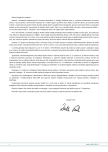CONTEMPORARY CONCEPTS ON INGUINAL LYMPH NODE DISSECTION FOR PENILE CANCER
Authors:
T. Kim; T. Hakky; P. E. Spiess
Authors‘ workplace:
Department of Genitourinary Oncology
; Tampa, FL
33612
Published in:
Urol List 2010; 8(4): 25-27
Overview
The management of lymph node metastases (LNM) in penile squamous cell carcinoma presents a challenge from both a medical management and surgical perspective. However, the appropriate management of inguinal and pelvic lymph nodes serves not only as a prognostic indicator, but possible surgical cure for many patients [1]. In this review, we discuss the management of inguinal and pelvic lymph nodes and considerations in performing an ilioinguinal lymph node dissection (ILND).
Sources
1. Pow-Sang JE, Benavente V, Pow-Sang JM et al. Bilateral ilioinguinal lymph node dissection in the management of cancer of the penis. Semin Surg Oncol 1990; 6(4): 241–242.
2. Virseda Rodriguez JA, Salinas Sanchez A, Hernandez Millan I. Carcinoma of the penis: what to do with the regional lymph nodes? Arch Esp Urol 1994; 47(4): 349–362.
3. Scher B, Seitz M, Albinger W et al. Value of PET and PET/CT in the diagnostics of prostate and penile cancer. Recent Results Cancer Res 2008; 170: 159–179.
4. Kroon BK, Horenblas S, Lont AP et al. Patients with penile carcinoma benefit from immediate resection of clinically occult lymph node metastases. J Urol 2005; 173(3): 816–819.
5. Solsona E, Iborra I, Ricos JV et al. Corpus cavernosum invasion and tumor grade in the prediction of lymph node condition in penile carcinoma. Eur Urol 1992; 22(2): 115–118.
6. Daseler EH, Barry JA, Reimann AF. Radical excision of the inguinal and iliac lymph glands (a study based upon 450 anatomic dissections and upon supportive clinical observation). Surg Gynecol Obstet 1948; 87: 679–694.
7. Spiess PE, Izawa JI, Bassett R et al. Preoperative lymphoscintigrapy and dynamic sentinel node biopsy for staging penile cancer: results with pathological correlation. J Urol 2007; 177(6): 2157–2161.
8. Tobias-Machado M, Tavares A, Silva MN et al. Can video endoscopic inguinal lymphadenectomy achieve a lower morbidity than open lymph node dissection in penile cancer patients? J Endourol 2008; 22(8): 1687–1891.
9. Saisorn I, Lawrentschuk N, Leewansangtong S et al. Fine-needle aspiration cytology predicts inguinal lymph node metastasis without antibiotic pretreatment in penile carcinoma BJU Int 2005; 97(6): 517–521.
10. Kroon, BK, Horenblas S, Deurloo EE et al. Ultrasonography-guided fine-needle aspiration cytology before sentinel node biopsy in patients with penile carcinoma. BJU Int 2005; 95(4): 517–521.
11. Cabanas RM. An approach for the treatment of penile carcinoma. Cancer 1977; 39(2): 456–466.
12. Grabstald H. Controversies concerning lymph node dissection for cancer of the penis. Urol Clin North Am 1980; 7(3): 793–799.
13. Heyns CF, Fleshner N, Sangar V et al. Management of the Lymph Nodes in Penile Cancer. Urology 2010; 76 (2 Suppl 1): S43–57.
14. Ravi R. Correlation between the extent of nodal involvement and survival following groin dissection for carcinoma of the penis. BJU 1993; 72 (5 Pt 2): 817–819.
15. Spiess PE, Hernandez MS, Pettaway CA. Contemporary inguinal lymph node dissection: minimizing complications. World J Urol 2009; 27(2): 205–212.
16. Ornellas AA, Seixas AL, de Moraes JR. Analyses of 200 lymphadenectomies in patients with penile carcinoma. J Urol 1991; 146(2): 330–332.
17. Crawford ED, Daneshgari F. Management of regional lymphatic drainage in carcinoma of the penis. Urol Clin North Am 1992; 19(2): 305–317.
18. Jain PK, Sowdi R, Anderson AD et al. Randomized clinical trial investigating the use of drains and fibrin sealant following surgery for breast cancer. Br J Surg 2004; 91(1): 54–60.
19. Kroon BK, Lont AP, Valdes Olmos RA et al. Morbidity of dynamic sentinel node biopsy in penile carcinoma. J Urol 2005; 173(3): 813–815.
20. Sotelo R, Sanchez-Sala R, Carmano O et al. Endoscopic lymphadenectomy for penile carcinoma. J Endourol 2007; 21(4): 364–367.
21. Bouchot O, Rigaud J, Maillet F et al. Morbidity of inguinal lymphadenectomy for invasive penile carcinoma. Eur Urol 2004; 45(6): 761–765.
22. Yao K, Hu T, Li YH et al. Modified Technique of Radical Inguinal Lymphadenectomy for Penile Carcinoma: Morbidity and Outcome. J Urol 2010; 184(2): 546–552.
23. Lont AP, Kroon BK, Gallee MPW et al. Pelvic lymph node dissection for penile carcinoma: extent of inguinal lymph node involvement as an indicator for pelvic lymph node involvement and survival. J Urol 2007; 177(3): 947–952.
Labels
Paediatric urologist UrologyArticle was published in
Urological Journal

2010 Issue 4
Most read in this issue
- WHAT IS CONSIDERED EROTIC IN NONVERBAL COMMUNICATION
- TREATMENT OF LOCOREGIONAL DISEASE IN PATIENTS WITH PENIS CARCINOMA
- TESTOSTERONE REPLACEMENT THERAPY AFTER PROSTATE CANCER: THE EMERGENCE OF A NEW CONCEPT IN CURRENT UROLOGIC PRACTICE
- THE MODERN ENDOCRINE EVALUATION OF THE INFERTILE MALE
